Taryn Simon: A Living Man Declared Dead and Other Chapters: I-XVIII
UCCA (798 Art District, No. 4 Jiuxianqiao Lu, Chaoyang District, Beijing, China 100015) Oct 15, 2013–Jan 5, 2014
Peter Schjeldahl once delivered a lecture asking “Can we speak sensibly about what we like about art?” (1) Taryn Simon’s work to date has attracted international acclaim, high-profile exhibitions (including at the Guggenheim, Tate Modern, MoCA LA, MoMA New York and Neue Nationalgalerie in Berlin) and related texts by the likes of Salman Rushdie, Homi Bhaba and Hans Ulrich Obrist. As her project “A Living Man Declared Dead and Other Chapters” arrives in Beijing, one wonders: can one talk sensibly about what people like about Simon’s work?
Simon herself doubts that she has ever enjoyed making it; for her, it is a labor. The first impression on encountering “A Living Man Declared Dead” is of a systematic method and unwavering effort. The project took four years of globetrotting work—a great depth of research and hard-won access which is distilled into a final cut on the gallery walls, and offered in its entirety in a huge book edition. In the exhibition are groups of panels or “chapters” in slim black frames of equal height but widths to accommodate their content. Each chapter, from left to right, first contains small, uniformly sized photographs of people through generations of the same bloodline—usually the relations of a “point” subject selected for their particular story. The titular man declared dead is Shivdutt Yadav in Northern India, whose relations bribed officials to register him as dead in order to assume inheritance of his Father’s land. If someone is unavailable to be photographed or declines participation, they are nonetheless given a blank space in the grid, becoming conspicuous by their absence; sets of clothes or bodily artifacts also serve to represent some names. The central panel is given over to a column of text relating the details of each case (due to particular conditions in Beijing, it is not, of which more later). The last offers fragments of visual context or evidence arranged in a less formal way—letters, old polaroids, images of unrecovered paintings.
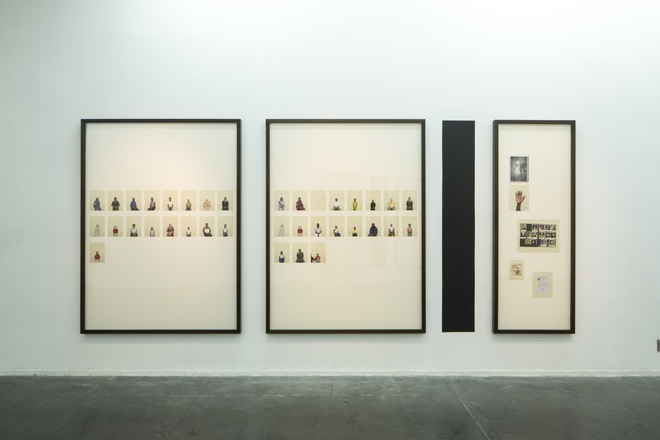
展览现场
The first appeal of this project could then be the visual satisfaction of its acutely designed and ordered presentation, and the approach which generates it. Simon’s endeavor can be loosely connected with the so-called “archival turn” of the end of the 20th century, wherein the archive broke free from closed historical record to touch the desires and attention of society at large. (2) Later, in 1929, August Sander (whom Simon cites as an inspiration) produced his “Face of Our Time.” This backdrop lends Simon’s project an air of authenticity and longevity. The field of negative space around the photographs is important—to order, augment, aestheticize, isolate or perhaps even to doubt them. Its off-white or yellowed tone also evokes the passage of time. But more than this, her project is inspired by and inspires in its turn that same sort of curiosity about the people who share “our time.” Here is a kind of constellation which helps to affirm the diversity and depth of human experience, marking an urge to document it. This documentation is presented with obsessive precision, and one is grateful for its level of quality.
Simon’s subject-matter, which is both international in scope and particular in character and detail, conjures a collective portrait. Each chapter here is a concentration of disparate knowledge. Chapter 1, for example, incorporates the names of ascendants and decedents, a letter to the judicial magistrate of Azamgarh (in Uttar Pradesh), the socio-economic threat to income from land in the area and the cultural practice of cremating the dead and throwing them into in the Ganges. The aggregate of chapters amounts to something like a humanist panorama—a form of perspective which in itself has a certain primal appeal. In order to grasp this import, “A Living Man Declared Dead” seems to ask of its audience only eyesight, and literacy. Refreshingly in our age of chatter, no artist’s statement is required to elucidate this work because everything—down to a description of the system for ordering the photographs—is self-contained in the exhibition. This is a project and presentation that needn’t rest on art history for effect, even as it finds support there.
Close to the core of this project must be a certain kind of fascination. “A Living Man…” is not unlike a picture book of hard tales and their protagonists—in chapter order: the living dead, Kenyan spirit doctors, body doubles, abductees, lab rabbits, massacre, hijacking, Nazism, reincarnation, propaganda, murdered albinos, orphans and homosexual repression. It’s a grisly catalogue which, even accepting Simon’s penchant for the hidden and untold, is startling in its exposition of human brutality. The artist’s compulsion and commitment sanctifies our own compulsion to look, consuming faces and narratives. There is humor, too—albeit black. In the reincarnation chapter (XIV) a young Lebanese man, Ribal Btaddini, is apparently his grandfather reborn. Ribal is therefore both father and son to his own father; his portrait recurs again and again, its deadpan expression and the resultant confusion of the line growing more comical with every repetition.
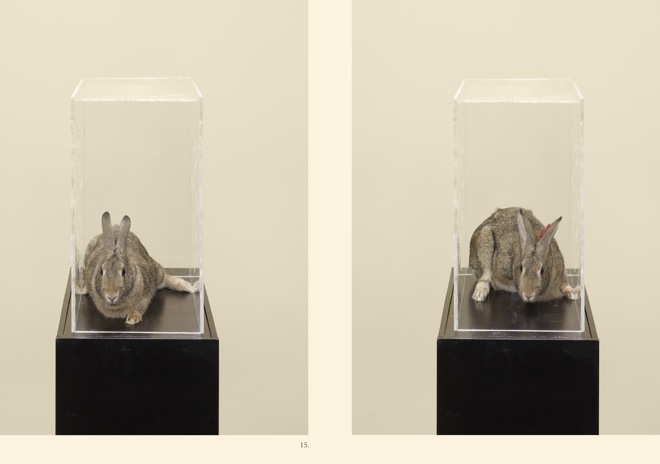
泰伦•西蒙,《一个被宣告死亡的活人及其他章节一至十八》
There are also fugitive paradoxes around this project which are seductive. Photography is a mortal and immortal medium in that it both preserves and robs the presence of its subjects. The images of these persons will circulate now, and beyond their deaths (3), witnessing and ignoring their lives. The apparent stability of Simon’s purpose—rendered almost forensically and with the multiple facets of portrait, text and image in objective grids—is in friction with this wavering relationship. Photographs also reflect a desire to fight the vanishing of memory. (4) Yet these stories never entered the memories of their audience at first hand—only though these images which, along with their texts, request one’s belief. The work therefore becomes a site in itself; it is the only location of encounter with these spectral records. But as such, it is really a form of non-place—itinerant and unclaimed by any of its “occupants.” The emotional neutrality with which the project seems to have been undertaken only contributes to this ambiance. These are all ghost stories: the living declared dead, and, as the project continues into the future, the dead will be delivered in these photographs as if they are still alive. This conflation of testimony and commemoration makes the show both a live transmission, and a monument. And before these effects even emerge, one has these strong photographic portraits—hundreds of them.
Schjeldahl in his lecture remarked “A test of success in a work, in the mind of the artist who has created it, is that it feels strange.” (5) Under conditions of censorship in China, this well-voyaged exhibition was unexpectedly affected. The central text panels in each chapter were not submitted to the censors in order to shield the photographs for exhibition (Phil Tinari, the director of UCCA, was concerned that the texts would provide a “reading” of the photographs, and therefore make them more liable to be barred). Instead, the text panels appear in full alongside their flanking images in a specially produced, bilingual catalogue with every exhibition ticket. Photographs that were censored are there too—including, ironically, some from the chapter (XV) on a Chinese family selected by the State Department as a suitable subject for Simon, and the entire chapter about a South Korean abduction. All of these missing panels are represented in the exhibition, however, as black silhouettes on the wall where they should be—literally like the marks of the censor’s block. This interrupted version of the show carries it into a contemporary context that would seek to restrict it. In a manner that aptly mimics the approach intrinsic to the work of still including absent or uncooperative persons with an allocated slot, so the walls of the space here have blank slots that enact what is missing. In this sense, the work makes unexpected progress of its own; it is able to evolve in contact with new conditions. For Simon, this strange experience and the changes that result from in in the format of presentation mean that the work—which she had deemed finished, “still feels very alive.” (6)
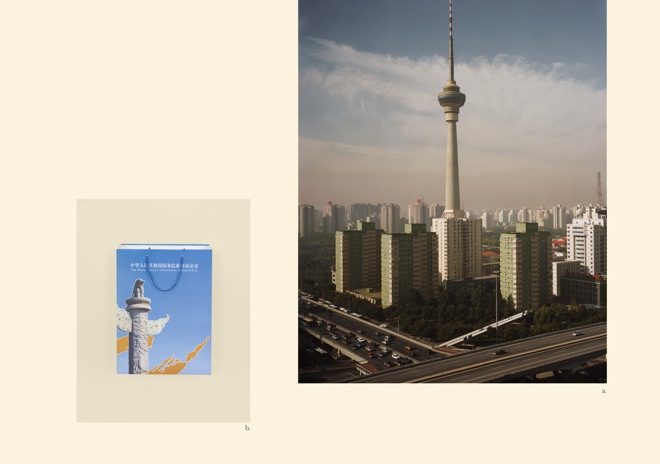
泰伦•西蒙,《一个被宣告死亡的活人及其他章节一至十八》
But beyond the aspects highlighted here—among them its aesthetic quality, archival bent, panoramic reach, guilty fascination, knowledge, stories, humor, paradoxes, photography and successful evolution in the Chinese context—“A Living Man Declared Dead” is finally more than the sum of its parts. This is a project replete with thought and engagement at more than the level of art. The exhibition is a slow one in terms of its preparation and digestion, so that time and absorption do justice to it. Hours could be spent trying to puzzle out the relationships between the people photographed and feeding on the social, political, historical and personal threads gathered in these twelve Chapters.
Ultimately, however, this project is not about what is made visible here. Withholding all personal emotion, Taryn Simon has erected a highly elaborate stage. The irony of this acute, deeply researched and detailed site, in which even missing things are included, is that it defines negative space. In this un-delineated space, imagination, empathy, curiosity, suspicion, relief, horror, awe—indeed all potential reactions—play out. Like a perfectly prepared surface, the exhibition awaits the human contact that can transcend its form and ignite its content. The transition from system to imagination is seamless and shuttling, and from a point of minimum expression, arbitrary and unexpected effects are made possible. The artist says that her interest for this project is in Fate. “A Living Man Declared Dead” is finally about the space around and in between life, present in absence and left unrecorded—unthreatened by fact.
Endnotes:
(1) Peter Schjeldahl, “Can we speak sensibly about what we like about art?” (lecture, School of Visual Arts, New York, NY, November 18, 2010).
(2) Adina Arvatu, “Spectres of Freud: The Figure of the Archive in Derrida and Foucault,” Mosaic (Winnipeg) 44, no. 4 (2011): 141.
(3) Gerhard Richter, “Between Translation and Invention: The Photograph in Deconstruction,” in Copy, Archive, Signature: A Conversation on Photography, by Jacques Derrida, ed. Gerhard Richter, trans. Jeff Fort (Stanford, CA: Stanford University Press, 2010), xxxiii.
(4) Ibid., xxviii.
(5) Schjeldahl, “Can we speak sensibly about what we like about art?”
(6) Julius Purcell, “How artist Taryn Simon and curator Philip Tinari are tackling censorship in China”, Financial Times, November 15, 2013, accessed December 5, 2013, http://www.ft.com/cms/s/2/1066e5ea-4c6e-11e3-923d-00144feabdc0.html#axzz2nzs5MKZm
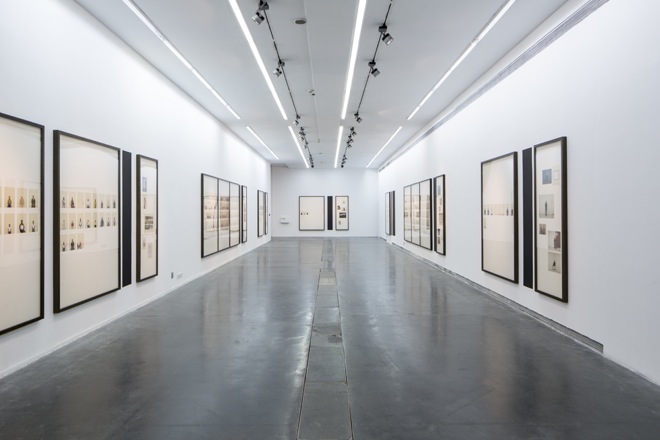
展览现场
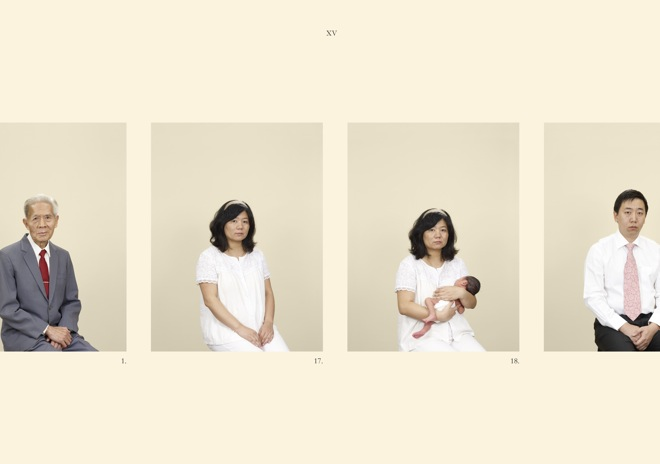
泰伦•西蒙,《一个被宣告死亡的活人及其他章节一至十八》

泰伦•西蒙,《一个被宣告死亡的活人及其他章节一至十八》